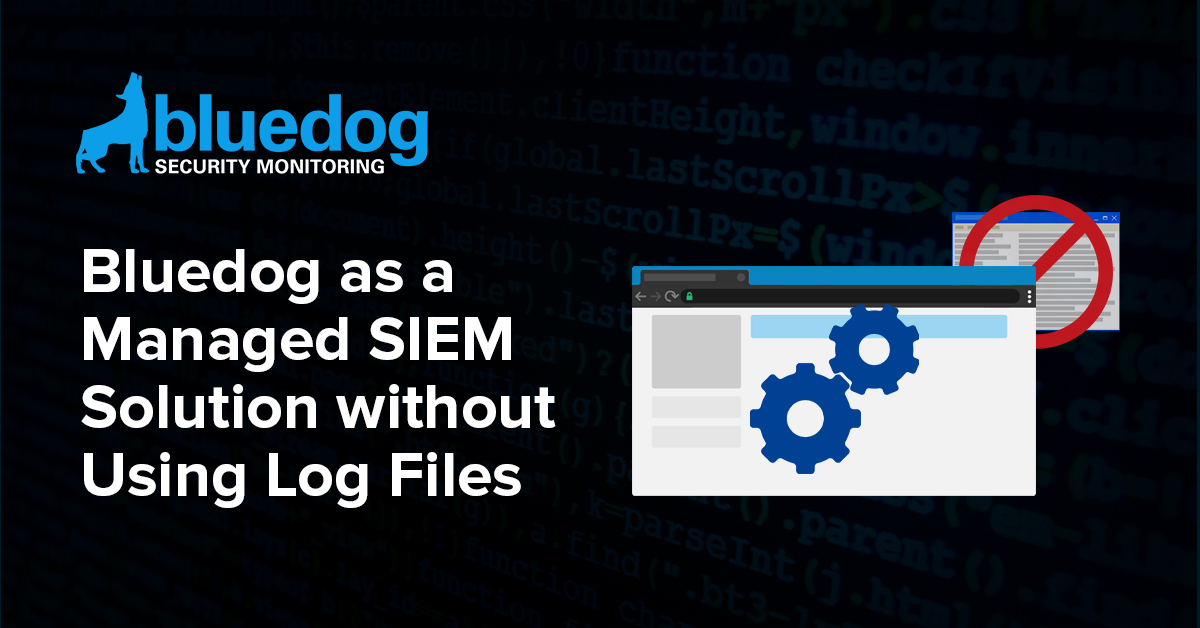
SIEM solutions have been cybersecurity professionals' go-to for some time now. There is no shortage of options in the market. However, in an industry as fast-evolving as cybersecurity, there is a distinct need for SIEM solutions to keep up with market demands.
Let's take a look at what SIEM solutions are, what their shortcomings are, and how we can do things better.
What Is SIEM?
SIEM stands for Security Information and Event Management and is a solution with monitoring, detection, and alert capabilities for security incidents or other types of events that can negatively impact your IT infrastructure. Through SIEM, cybersecurity professionals can get insights into the activities within their IT environment and a centralized, comprehensive view of their security.
Typically, SIEM solutions work by collecting and aggregating log data that's been generated throughout the company's entire IT system. This means that SIEM software can use logs from networks, applications, cloud applications and systems, and security devices like antivirus software and firewalls.
SIEMs can identify, categorize, and analyze countless types of events and incidents. In SIEM analytics, real-time alerts, dashboards, and reports for mission-critical management units are used.
Quite comprehensive, right?
There's just one big problem with the traditional SIEM model: it relies on logs.
6 Reasons Why Log-File-Based Security Monitoring Is Obsolete
We need to do things better when it comes to security monitoring. And the first step in doing so is not relying so much on log files. Here's why:
You Miss Some of the Most Vulnerable Devices
BYOD anyone? The Bring Your Own Device era has opened the flood gates to numerous vulnerabilities. The devices brought by employees aren't configured to send log files BUT they are a huge vulnerability.
Malware and other types of attacks love BYOD because it provides them with an easy access point. Plus, it makes it really hard to track the attack source.
The same goes for IoT devices, like printers and VoIP phones. They are attacker's favorites when it comes to hiding their trail.
Attackers Can Clean Their Trails Easily
Do you know what one of the first things an attacker that penetrated your server will do? That's right: cover their tracks. This means that the log files will disappear with a single click and you'll be left looking for the proverbial needle in the haystack.
Furthermore, when an attacker deletes their log files (and they always do if they're worth their salt!), you won't even know if the attack that's been flagged by your system is still underway.
Don't Forget about the OSI Perspective
From an OSI layer perspective, log files are on layer 7, and network monitoring is on layer 2. This means network monitoring is getting much more detail.
Furthermore, log files don't contain the proof you need to confirm the attack or to help convict the attacker, which network data does. Logs files are only the end result; there are no underlying proof data.
Log Files Can't Be Used to Catch Lateral Movements
Lateral movements within a network don't generate logs. So how can you possibly tell which system has the attacker touched and which data may be leaked?
Simply put: you can't if your security monitoring is based on log files.
No Behavioral Analysis Capacity
Log files can help you catch basic attacks. It's true that most attacks are the “easy” kind, but this is not the kind you want to catch early on. The sophisticated attacks can incur much more damage.
But in order to catch those, you need behavioral analysis capabilities, which log-based security monitoring doesn't typically offer.
More Log Files, More Money Spent on Security and Compliance
Yes, you can have too much of something, even if it's something good. Log files are a perfect example. Setting up and collecting log files is time consuming and very costly to do correctly and maintain properly. You need central log servers and loads of storage capacity.
Plus, with all those log files and extra storage, you now need double security governance to prove the data integrity of your log files. It's a lot of noise generated for very basic results, don't you agree?
What can you do instead?
The MDR Dashboard that Doubles Up as (Better) SIEM
MDR (Managed Detection and Response) is the affordable, comprehensive, and thorough answer to the shortcomings of traditional SIEM solutions. Without relying on log files, the Bluedog MDR solution:
- Offers high-level protection at the price of basic solutions.
- Includes Rogue Device Detection and Internal Vulnerability Scanning with no additional costs.
- Thanks to our fully-staffed SOC, you are protected 24/7.
- You don't have to worry about staffing your own cybersecurity department - that's far too expensive and it rarely has the expected ROI. We've done all the staffing and recruiting for you and we can act as your external security department.
- Offers full access to our dashboard so you can always be up-to-date and in control of what's happening.
- Help you become fully compliant with various national and international standards.
- Generates data from the activity across the network and the devices connected to it, so you can be sure that nothing goes under the radar.
At Bluedog Security Monitoring, our mission is to deliver affordable security solutions to companies of all sizes. We strongly believe that proper security shouldn't be reserved to big corporations alone. This is why you can get all of the above with no additional hardware costs and for an affordable monthly subscription that can scale along with your security needs.
Need to know more about how our MDR service can help you keep cybersecurity costs under control and replace the obsolete SIEM approach? Schedule a demo with our cybersecurity experts. It's 100% FREE, so what have you got to lose?